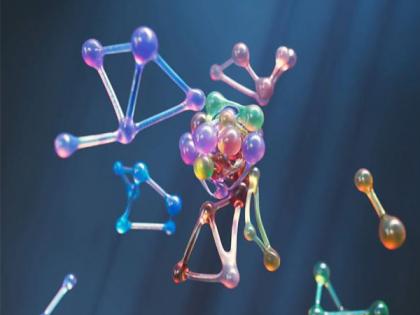Physicists snaps first images of 'free-range' atoms: Study
By ANI | Updated: May 8, 2025 22:17 IST2025-05-08T22:11:53+5:302025-05-08T22:17:35+5:30
Washington Dc [US], May 8 : Physicists captured the first images of individual atoms freely interacting in space. The ...

Physicists snaps first images of 'free-range' atoms: Study
Washington Dc [US], May 8 : Physicists captured the first images of individual atoms freely interacting in space. The pictures reveal correlations among the 'free-range' particles that until now were predicted but never directly observed.
MIT physicists have captured the first images of individual atoms freely interacting in space.
Their findings, appearing in the journal Physical Review Letters, will help scientists visualize never-before-seen quantum phenomena in real space.
The images were taken using a technique developed by the team that first allows a cloud of atoms to move and interact freely.
The researchers then turn on a lattice of light that briefly freezes the atoms in their tracks, and apply finely tuned lasers to quickly illuminate the suspended atoms, creating a picture of their positions before the atoms naturally dissipate.
The physicists applied the technique to visualize clouds of different types of atoms, and snapped a number of imaging firsts. The researchers directly observed atoms known as "bosons," which bunched up in a quantum phenomenon to form a wave.
They also captured atoms known as "fermions" in the act of pairing up in free space a key mechanism that enables superconductivity.
"We are able to see single atoms in these interesting clouds of atoms and what they are doing in relation to each other, which is beautiful," says Martin Zwierlein, the Thomas A. Frank Professor of Physics at MIT.
In the same journal issue, two other groups report using similar imaging techniques, including a team led by Nobel laureate Wolfgang Ketterle, the John D MacArthur Professor of Physics at MIT. Ketterle's group visualized enhanced pair correlations among bosons, while the other group, from Ecole Normale Superieure in Paris, led by Tarik Yefsah, a former postdoc in Zwierlein's lab, imaged a cloud of noninteracting fermions.
The study by Zwierlein and his colleagues is co-authored by MIT graduate students Ruixiao Yao, Sungjae Chi, and Mingxuan Wang, and MIT assistant professor of physics Richard Fletcher.
"These techniques allow you to see the overall shape and structure of a cloud of atoms, but not the individual atoms themselves," Zwierlein notes. "It's like seeing a cloud in the sky, but not the individual water molecules that make up the cloud."
He and his colleagues took a very different approach in order to directly image atoms interacting in free space. Their technique, called "atom-resolved microscopy," involves first corralling a cloud of atoms in a loose trap formed by a laser beam.
Disclaimer: This post has been auto-published from an agency feed without any modifications to the text and has not been reviewed by an editor
Open in app